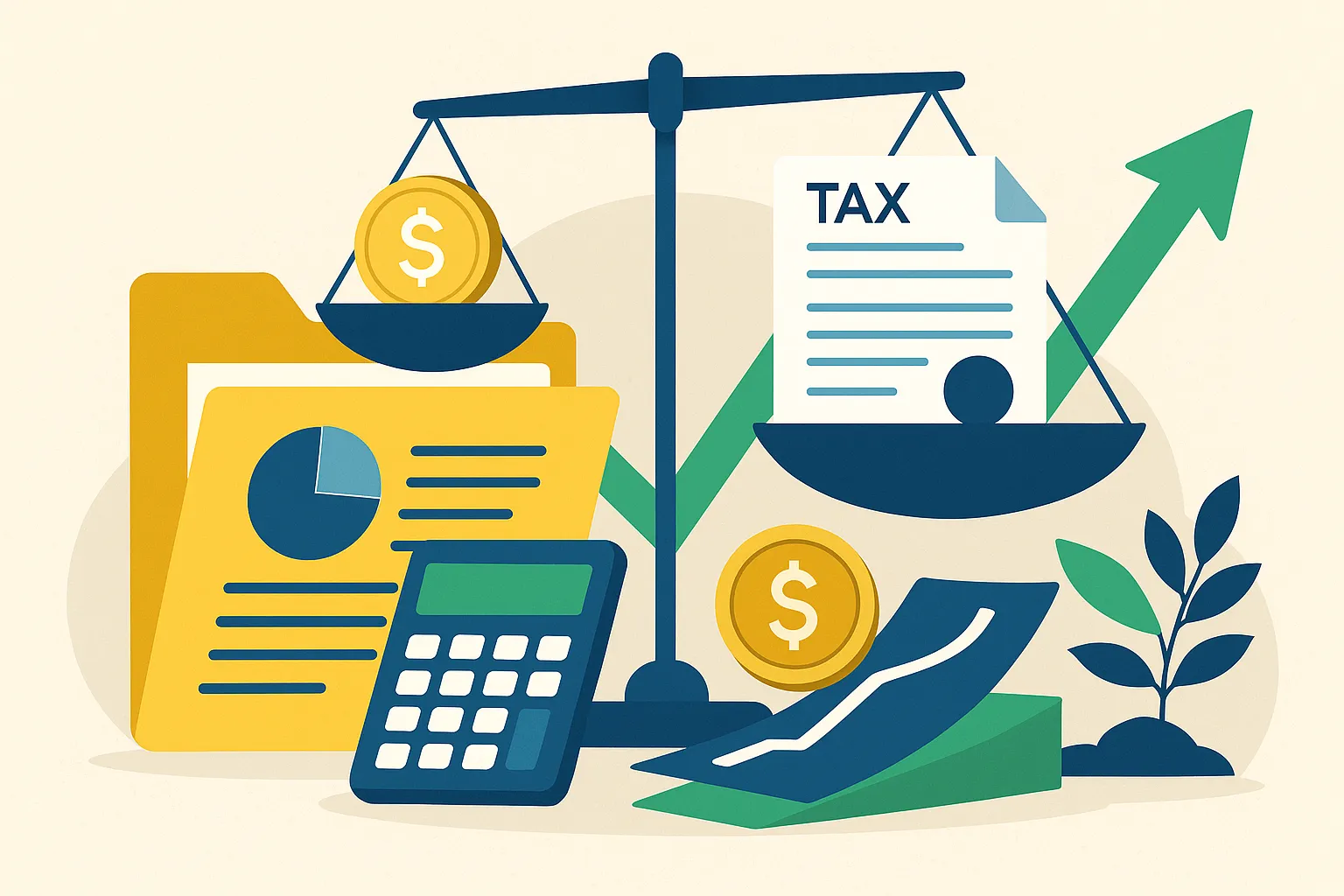Tax Alpha Estimator - Tool

What the Tax Alpha Estimator Does
The estimator translates portfolio activity into an intuitive measure of “tax drag.” By inputting expected returns, realized gains, and dividend yield, users see how much of their return may be lost to taxes each year. For a hypothetical example, an 8% pre-tax return with moderate turnover and dividends might shrink to just over 7% after taxes.
This tool is not a forecast of investment performance. Instead, it is an educational way to see how taxes intersect with portfolio structure and turnover. The tool simplifies tax treatment and does not account for short-term vs. long-term differences, tax-loss harvesting, or changing laws.
Key Takeaways
- Tax Alpha measures the impact of taxes on portfolio returns - usually negative, since taxes reduce growth.
- The tool combines realized gains, dividends, and tax rates to show the effective after-tax return.
- A simple visual illustrates what portion of pre-tax return is retained after taxes.
- It can help investors understand why tax efficiency - such as minimizing unnecessary gains - can matter over time.
Breaking Down the Inputs
The estimator asks for a few key assumptions:
- Pre-Tax Total Return (Expected): The baseline growth rate before taxes.
- Realized Capital Gains (%): The portion of the portfolio sold and taxed each year.
- Dividend Yield (%): The share of return distributed as dividends.
- Tax Rates: Federal long-term gains and dividend rates applied to the inputs.
With these, the model calculates:
- Tax Alpha: Net effect of taxes on pre-tax returns.
- After-Tax Return: The growth rate actually retained.
- Dollar Impact (optional): The annual tax bill in dollar terms.
Why It Matters for Investors
So what? Understanding tax drag makes it easier to compare strategies. A fund with high turnover may generate frequent taxable gains, while a lower-turnover option may defer taxes for longer. Over decades, that difference compounds into meaningful gaps in wealth.
The Tax Alpha Estimator does not recommend actions, but it does frame an important truth: pre-tax numbers rarely tell the full story.
This interactive analysis tool uses user-entered assumptions to illustrate the potential tax impact on investment returns. Results are hypothetical, for educational purposes only, and are not forecasts or personalized tax advice. The tool applies simplified annualized formulas using the inputs provided to estimate after-tax returns and “tax drag.” It does not account for short-term gains, loss carryforwards, changing tax laws, or state taxes. Actual outcomes will vary based on individual circumstances, and results will change if inputs change. This tool is not a recommendation for any investment or strategy.
How optimized is your portfolio?
PortfolioPilot is used by over 30,000 individuals in the US & Canada to analyze their portfolios of over $30 billion1. Discover your portfolio score now:






